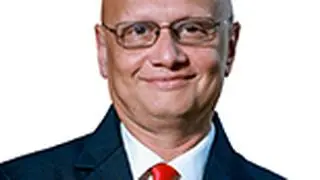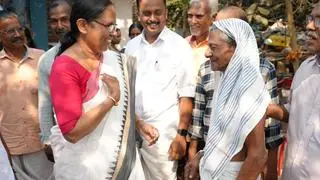The SARS-CoV-2 sub-variant JN.1 has been classified as a separate variant of interest (VOI) from its parent lineage BA.2.86, due to its rapidly increasing spread, the World Health Organization has said.
In fact, SARS-CoV-2 caused the Covid-19 pandemic, and over three years, the latest sub-variant JN.1 was classified as VOI as part of the BA.2.86 sublineages.
Based on available evidence, “the additional global public health risk posed by JN.1 is currently evaluated as low,” the UN health agency said. “Despite this, with the onset of winter in the Northern Hemisphere, JN.1 could increase the burden of respiratory infections in many countries,” it added.
Addressing a common concern, the WHO said, “Current vaccines continue to protect against severe disease and death from JN.1 and other circulating variants of SARS-CoV-2, the virus that causes Covid-19.” In fact, Covid-19 is not the only respiratory disease circulating. Influenza, RSV and common childhood pneumonia are on the rise, it added.
This week, India’s Health Ministry has also advised States to increase their surveillance following the reporting of a JN.1 case from Kerala. Besides mock drills, the Centre had also asked the States to take stock of the inventory required to treat the virus-variant.
Available tools
Meanwhile, the WHO has advised masks in crowded, enclosed, or poorly ventilated areas, and a safe distance from others, as feasible. Other features of the advisory include, improved ventilation, the practice of respiratory etiquette (covering coughs and sneezes), cleaning hands regularly, staying up to date with vaccinations against Covid-19 and influenza, especially if the person has a high risk for severe disease, staying home if you are sick and getting tested if you have symptoms, or if might have been exposed to someone with Covid-19 or influenza.
Closing Covax
The WHO’s classification of JN.1 comes even as it announced the shutting down of COVAX, the multilateral mechanism it set up for equitable global access to COVID-19 vaccines. Launched in 2020, this facility would draw to a close on 31 December, the WHO said.
Jointly led by the Coalition for Epidemic Preparedness Innovations (CEPI), Gavi, the Vaccine Alliance (Gavi), UNICEF and the World Health Organization (WHO), COVAX has supplied nearly 2 billion Covid-19 vaccine doses and safe injection devices to 146 economies, it said. And these efforts are estimated to have helped avert the deaths of at least 2.7 million people in the COVAX Advance Market Commitment (AMC) low- and lower-middle-income participating economies (lower-income economies) that received free doses through the mechanism, alongside nearly $ 2 billion in critical support to turn vaccines into vaccinations, the WHO added.
The 92 lower-income economies that were eligible to participate in the programme with support from the financing mechanism known as the Gavi COVAX Advance Market Commitment (COVAX AMC) will continue to have the option to receive Covid-19 vaccine doses and delivery support through Gavi’s regular programmes, it said. “So far, 58 lower-income economies have requested a total of 83 million doses in 2024, with plans to focus on the continued protection of priority groups, including health care workers, community workers and older adults,” the agency added.







Comments
Comments have to be in English, and in full sentences. They cannot be abusive or personal. Please abide by our community guidelines for posting your comments.
We have migrated to a new commenting platform. If you are already a registered user of TheHindu Businessline and logged in, you may continue to engage with our articles. If you do not have an account please register and login to post comments. Users can access their older comments by logging into their accounts on Vuukle.